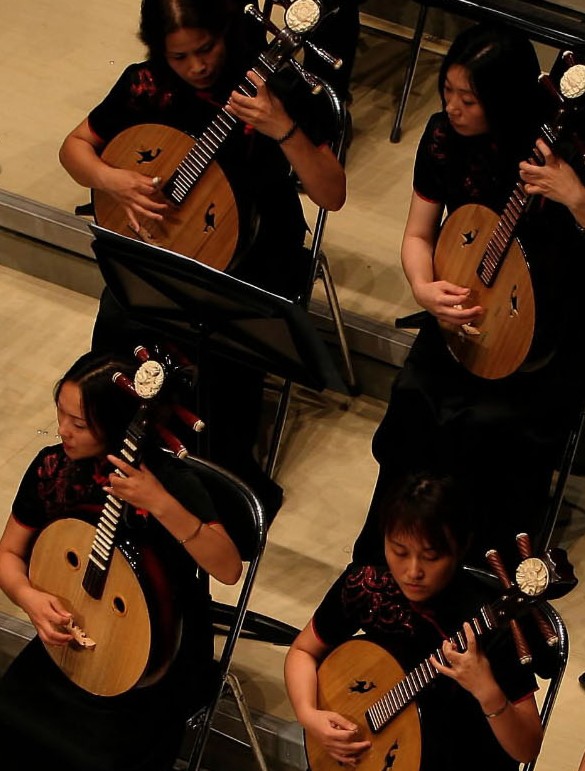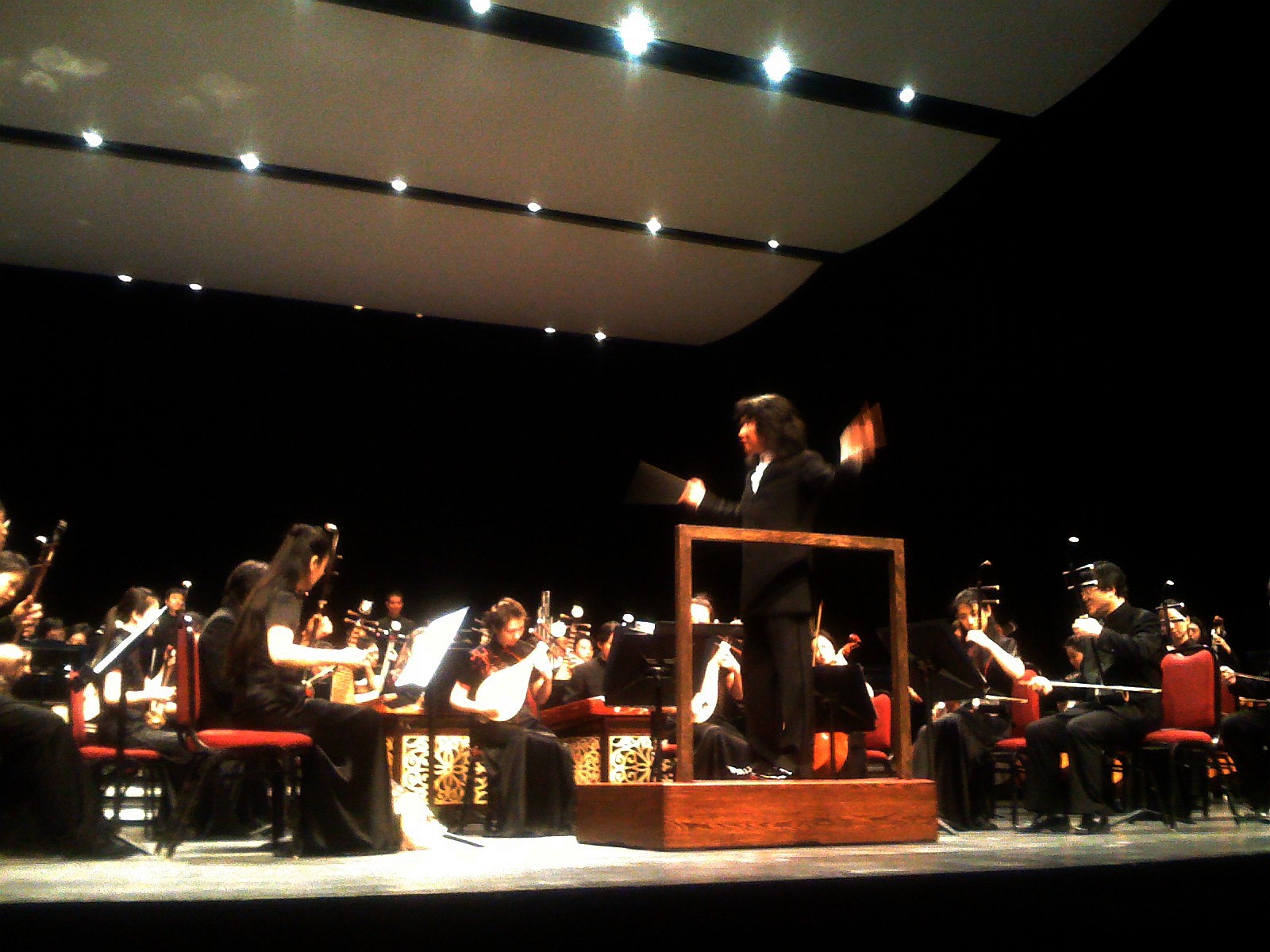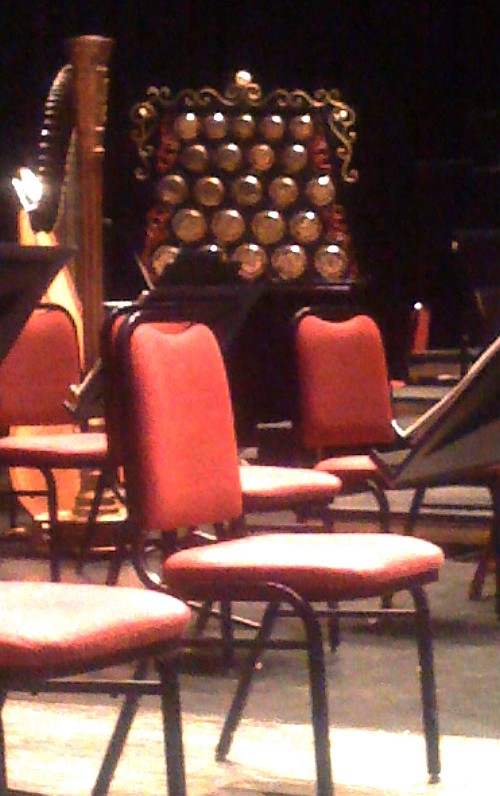
C hinese written script is made up of several thousand individual graphs. Each consists of an invariable group of strokes executed in a set order. One of the truly unique features of calligraphy that results from these apparently restrictive guidelines is that the viewer is able to mentally retrace, stroke by stroke, the exact steps by which the work was made. The viewer also is able to observe extremely subtle nuances of execution—where a stroke was made swiftly or slowly; whether the brush was put to the paper with great delicacy or force; and so on. The ability [and inducement!] to perform such mental retracing personalizes the viewing experience and generates in the viewer a strong sense of interacting or communing with the absent calligrapher [composer] ... Calligraphy clearly had this obvious social dimension, but it also had an important ‘natural’ dimension that should not be overlooked. For example, early critics and connoisseurs often likened its expressive power to elements of the natural world, comparing the movements of the brush to the force of boulders plummeting down a hillside, or to the gracefulness of fleeting patterns left on the surface of a pond by a flock of swimming geese.”T here were many things for me to be inspired by while listening to the concert performed this past Monday evening at the National Arts Centre in Ottawa, Ontario. The concert—by the China Broadcasting Chinese Orchestra, conducted by Pang Ka-Pang—was a “kick-off” to both nations’ celebrating 40 years of China-Canada diplomatic relations and commercial trading.
— Charles Lachman, Asia Society.
F irst, this thought occurred to me as I listened to the 96 Chinese musicians performing: there are parallels between traditional Chinese orchestral music and certain types of traditional Chinese calligraphy!
S ome calligraphic styles involve strokes that are rapid, bold to an extreme—they are sketch-like in their spontaneity; each feature, once improvised, never to be returned-to.
B ut other Chinese calligraphy styles involve the placement of brush stroke on top of previous brush strokes—a “layer-upon-layer” effect with subsequent ink-brush strokes overlaying the ones that went before, creating extra visual, emotional ‘tension’ through the insistent, laminated repetition of a particular stroke-motion in one spot, to create part of the Chinese Hànzì character that is being written. The individual repetitions are not identical, so the effect is accumulative—a collective sonic endorsement of a single thought, one whose quality becomes now more obviously a ‘multi-faceted’ idea than we would have perceived it to be had it only been articulated once, one player to a part as one would do in most chamber music.

- Li Huanzhi (arr. Peng Xiuwen): Ouverture du nouvel An chinois
- Traditional (arr. Peng Xiuwen): Alors que la lune se lève
- W.A. Mozart (arr. Peng Xiuwen): Sérénade pour cordes en G majeur
- Tan Dun: Northwest Suite
- Liu Tieshan & Mao Yuan (arr. Peng Xiuwen): Danse du people Yao
- J. Strauss (arr Guang Naizhong): Pizzicato Polka, Op. 234
- Li Huanzhi: Chant folklorique chinois - Jasmine
- Liu Yuan: Hua Bangzi de Hebei (Cto. Pour banhu)
- Xu Changjun: Danse du dragon

O n Monday evening we heard musical examples emblematic of both: some of the works were bold, soloistic improvised “texts”; and others among them were insistent, collectivized, massively-parallelized texts, with extensive doubling and repetition.

[50-sec clip, China Broadcasting Chinese Orchestra, excerpt from Track 4, Disc B, ‘CBCO: 2005-2007 Season’, ISBN 978-7-880060280-9, Li Huanzhi, ‘Jasmine’, 1.6MB MP3]
T he ‘frisson’ generated by the massive parallelism—with whole sections of performers ‘doubling’ on the same part, with inevitable microtonal differences among them as they execute the part with fingers on strings 2 cm distant from the shaft/fingerboard—is just scintillating to listen to. But the polyphony of the composition may be quite small—only 8 or 10 parts. The sounds are being ‘crowd-sourced’ by 90+ performers: this may seem a very peculiar but nonetheless ‘chamber music-like’ idiom to a Western listener! Twelve erhus on one note, and twelve more erhus on another note, playing in thirds, two-part harmony. Reminiscent of cloud-computing on dozens of parallel distributed CPUs.
B owing mostly right down on top of the wooden resonator box, with its little deposit of rosin on top to insure that the bowhair keeps its grip on the strings. Snakeskin covering the resonator, with a tiny floating bridge and bit of felt—to minimize disturbance of strings’ motion to the positioning of the bridge and to optimize the sound production.
E ach erhu musician has two instruments, each with a different color of felt—tuned differently, suitable for rapidly switching to perform different compositions? Somewhat like a violinist who needs to play scordatura may keep two instruments at the ready, one of them alternately-tuned?

A second insight—novel, at least for us in the audience who do not frequently have the chance to listen to Chinese music—was the varied narrative structure of the pieces that comprised the program. In several of the pieces, there were at least three “screens” or sonic tableaux where simultaneous “action” was unfolding. One of these afforded an “area” in which each performer could execute her/his part with discreetly improvisatory gestures that are broadly consistent with the score using the language employed in the score and compatible with what the other members of your section are playing. Another: an area where each performer can control the sound elements in the small-scale context of musical phrases or motifs. In yet another, a chance for the listener to collaborate with the performers to “rewrite” a quote from the composition. And finally, a space in which users can imagine and participate (as when, near the end of the last piece of the concert, Dragon Dance, conductor Pang Ka-Pang directed the audience in clapping in-time with the percussion parts). In other words and somewhat in contradiction of the conventional notion of ‘collectivistic’ section playing in unison, etc., etc., there is in reality a remarkable latitude for individual expression and structured improvisation within the Chinese music idioms.

| Five Note Scale: | Gong | Shang | Jue | _ | Zhi | Yu | _ |
| Seven Note Scale: | Gong | Shang | Jue | Bienzhi | Zhi | Yu | Biengong |
| Western Scale Degrees: | Do | Re | Mi | Fi | Sol | La | Ti |
H armonic structure and voice-leading of these pieces was fascinating as well. For example the nominally pentatonic Chinese scale can be modulated within a diatonic context. The theory may indicate 12-notes to an octave, but most of these compositions are predominantly pentatonic with diatonic/chromatic passing tones and ornaments. The solo concerto performance by banhu virtuosa, Jiang Kemei, displayed tremendous bravura improvisations, including many executed with subtle slides of the bow and manipulation of the bowhair tension with the second and third fingers. Astonishing virtuosity.

W hat else? In some of the pieces, there were figures that were repeated, usually rapidly and over a prolonged interval of 10 or more seconds. But these repetitions are varied, with some musicians altering some pitches or ornaments.
I n other words, there is a powerful, ritualistic effort on the part of all, to sustain the collective impulse of all of the performers.
H ere and there, a small pause was inserted, a fraction of a second longer than in the previous repetition. Or the bows of the erhus slid downward on the strings (creating a tonal slide/gliss that was not present in the previous repetition) and ended in a percussive ‘knock’ of the bowstick against the body of the erhu. Micro-variations.
- qupai -- different guises of a tune or figure, whose identity remains recognizable despite the changes or guises; a wide interpretive latitude of valid execution; malleability of the score; individual creativity within controlled boundaries.
T he erhu is a 2-stringed fiddle with a 10 cm diameter cylindrical snakeskin-covered resonator box, held upright by the left hand with the resonator sitting on the player’s left thigh. The strings are about 2 cm away from the vertical shaft (which could not be called a finger board, so far away is it that the fingers never touch it).
T he fingers of the left hand stop the strings, while the right hand and arm operate the bow. By pushing the wood of the bow outward or pulling the bow hair inward with right hand fingers, the player produces sound from one of the two strings. Bowing techniques include long bow (chang gong), short bow (duan gong), tremolo (chan gong), and others. In modern erhu performance, the left hand moves to several positions. Left hand techniques, which often distinguish the special sound characteristics of erhu, include vibrato (rou yin), glissando (hua yin), appoggiatura (da yin), and others.

T he erhu is bowed with an underhanded bowhold. Bowing techniques include ‘la gong’ (analogous to ‘down bow’ technique used on violin family) and ‘tui gong’ (analogous to the ‘up bow’ ). Aside from the usual bowing techniques, the erhu and related instruments can also be plucked, usually using the index finger of the right hand. Left-hand techniques include hua yin (glisses) and rou xian (vibrato).
The outside (lower-pitched) string and inside (higher-pitched) string of the erhu are tuned a fifth apart, most often with D4-A4 (d1-a1) or C4-G4 (c1-g1), sometimes G3-D4 (g-d1) or A3-E4 (a-e1). Erhu has a range of three octaves D4-D7 (d1 to d4).
T hird insight: the diverse timbres of the various instruments make possible a very wide range of musical colors and textures. The sonic palette is so diverse that it demands tremendous expertise, both in terms of playing and orchestration.
S o-called ‘si-zhu’ chamber instrumentation can be executed by small ensembles—as few as 15 members but more typically 24 to 30. String ensemble orchestration is also done and consists of gaohu, erhu, zhonghu, cello and double bass. I wonder what some of the large-orchestra compositions that CBCO performed on Monday would sound like if they were performed instead by chamber-orchestra-sized ‘si-zhu’ ensembles…
- erhu -- 2-string vertical fiddle.
- pipa -- 4-string lute.
- qin -- horizontal zither.
- yangqin/zheng -- multi-bridge plucked zithers.
- suona, guan -- double-reed with metal bell, about the size of a trumpet and with sonorities ranging between English horn and trumpet.
- soprano sheng, alto paisheng and bass baosheng -- vertical free-reeds.
- dizi -- flutes.
- metal perc: ba (a flat plate of metal struck with a mallet) and luo (gongs), including yunluo (pancake-shaped bronze ‘cloudbells’ mounted in a vertical wooden panel and struck with a small beater).
- drumhead perc: da-gu (large drum) and tang-gu.
- wood perc: bang-zi (wood clappers) and mu-yu (wood blocks)
- many more…

P ang Ka-pang was born in 1965 in Anhui Province. He studied composition and conducting at the Shanghai Conservatory of Music and later at the Central Conservatory of Music in Beijing. In addition to leading several orchestras in Mainland China, he has conducted many other orchestras and has been a juror and guest conductor in Asia, Europe and the USA. He has conducted the Kyushu Symphony Orchestra in Japan, the Hong Kong Sinfonietta, Pusan National Symphony Orchestra, Singapore Chinese Orchestra, Vienna Mozart Orchestra, Vienna State Opera Orchestra, National Symphony of Austrian Musicians (Tonkünstler–Orchester Niederosterreich), Mozarteum Orchestra of Salzburg and the Grazer Symphonischer Orchester, among others. Since 2000, he has been invited each year to conduct the Chinese New Year Music Concert, a performance promoting Chinese music, held in Vienna’s Goldensaal Musikverein.

T he China Broadcasting Chinese Orchestra (中国广播民族乐团) is based in Beijing and represents the merger of the Chinese Film Orchestra Chinese Music Orchestra (中国电影乐团民族乐团), which was founded in 1949, and the China Broadcasting Chinese Orchestra (中国广播民族乐团), which was founded in 1953. Pang Ka-pang became chief conductor of the CBCO in 1998 and has led the CBCO in its various tours to other countries.

C ongratulations to CBCO on this superb, captivating performance! Thank you, too, for bringing the copies of CDs—recordings that are not otherwise available for purchase in North America!
- CBCO website
- Canada-China Art Association (CCAA) website
- A few older CBCO recordings available on Naxos—not the CDs that CBCO have while they are touring
- CCAA video promoting CBCO concert
- Chinese traditional instruments page at Wikipedia
- Chinese traditional ensemble configurations at Wikipedia
- Modern large chinese orchestra page at Wikipedia
- Han K-H, Gray J. Modern Chinese orchestra. Asian Music 1979;11:1-43.
- China, Canada kick off celebrations of 40th anniversary of diplomatic ties. Sina.com 10-MAR-2010.
- Huehns C. Early music erhu. Galpin Soc J 2001;54:56-61.
- Parts of erhu
- ChineseMusic.net
- Chinese Arts & Music Association website
- HKCO.org links concerning Chinese Orchestras
- Chinese calligraphy page at Wikipedia
- Haptic perception page at Wikipedia
- Lee Y-Y, Shen S-Y. Chinese Musical Instruments. CMSNA, 1999.
- Shen S-Y. Chinese Music and Orchestration: A Primer on Principles and Practice. CMSNA, 1991.
- Yung B, Raski E, Watson R, eds. Harmony and Counterpoint: Ritual Music in Chinese Context. Stanford Univ, 1996.

No comments:
Post a Comment